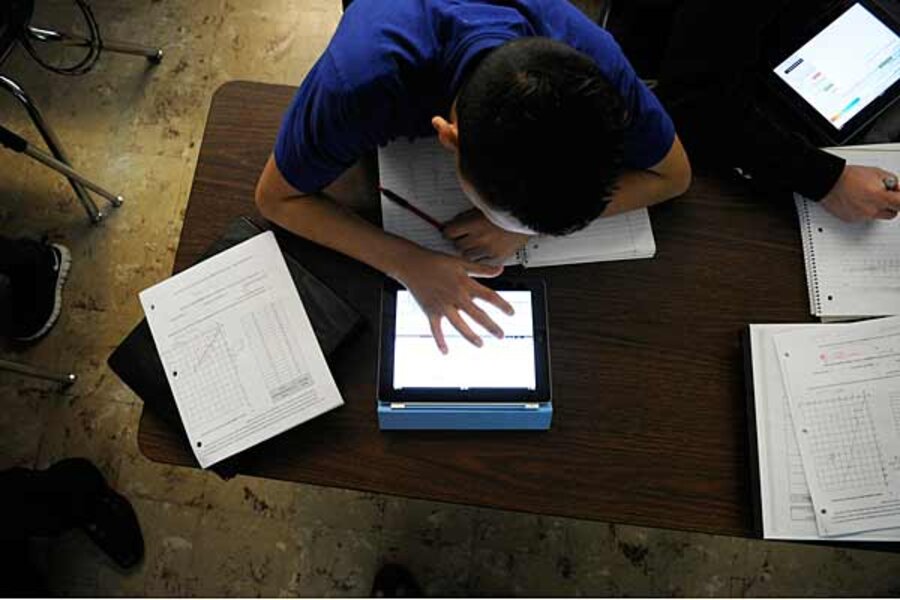Education 2.0: Can Digital Learning Day begin a classroom revolution?
Loading...
With iPads making their way into kindergarten classrooms from Maine to Tennessee, it may seem like a given that American education is embracing technology for the rising generation.
But technology’s presence – and effectiveness – varies widely. Just 40 percent of teachers reported that they or their students use computers often during instructional time in a 2010 report by the National Center for Education Statistics.
Organizers of Wednesday’s first-ever national Digital Learning Day hope it will inspire more educators, students, and parents to harness new technologies to enhance young people’s enthusiasm for learning and help them master key 21st-century skills.
“It is time we stop asking students to ‘power down’ when they go to school and instead to ‘power up’ and use their interest in technology as a new way to learn,” says Bob Wise, former governor of West Virginia and president of the Alliance for Excellent Education, an advocacy group in Washington, D.C., that spearheaded Wednesday’s events.
Thirty-nine states, 15,000 teachers, and 1.7 million students are expected to participate in a series of events and webcasts, including a live national town-hall meeting at 1 p.m., Eastern time, featuring US Secretary of Education Arne Duncan and Federal Communications Commission Chairman Julius Genachowski. (To tune in, click on this link.)
During the town hall, schools from Colorado to New Jersey will connect via Skype to talk about how they’ve improved student achievement through comprehensive plans to integrate digital learning tools and train teachers to make the best use of them.
One example to be featured Wednesday afternoon: The Mooresville Graded School District in North Carolina embarked on a digital conversion plan in 2007, and it has since seen student grades and graduation rates improve.
Staff and all fourth- to 12th-graders have received laptop computers, and younger students have access to Smart Boards and electronic response devices so they can interact during classroom lessons – for instance, by pushing a button to “vote” for an answer to a question posed by the teacher.
Educators in the district say there’s “collaborative hum” among teachers and students, and a chance now to individualize student learning plans.
Town-hall participants will also hear from National Online Teacher of the Year Kristen Kipp from Jeffco's Virtual Academy in Colorado, whose high school English lessons have helped everyone from gifted students to pregnant teens.
On a live-chat feature on the Digital Learning Day website, educators have already exchanged tips on digitally enhanced science projects and antibullying lessons that have been especially effective for students. And they've raised questions about how to ensure that students don’t damage their laptops at home.
By giving students better access to digital tools, districts can help close the digital divide and promote “the four C’s: collaboration, creativity, communication, and critical thinking,” said Bailey Mitchell, chief technology officer for Forsyth County Schools in Georgia, during a webcast on the site Wednesday morning.
Instead of instructing from a textbook, teachers have to “relinquish some of the control [and] think differently” about the types of assignments that will capitalize on digital tools, Mr. Mitchell said.
But for many K-12 school systems, new technologies, social media sites, and video games are still eyed with suspicion, says Richard Halverson, a professor at the University of Wisconsin-Madison School of Education. “You have this real split awareness.... For the people who use [such tools] ... they are invaluable. [But] for many K-12 schools, it threatens the existing relationship between teachers and students, and it’s seen as ... something to be controlled and banned rather than something to be exploited for learning purposes.”
National Digital Learning Day is a chance “for people who are in charge of schools to think, how can we use this, rather than whether we should use this," says Professor Halverson. "[It shows] the potential for these tools to change teaching and learning.”





